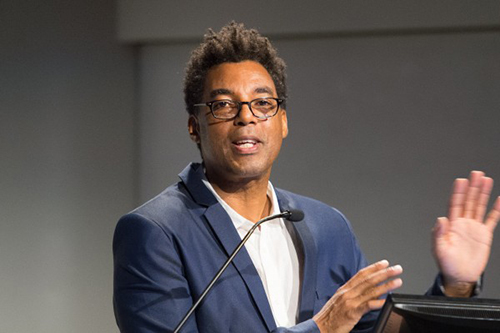Harvard Magazine: Rick Lowe Questions the Concept of “Value” at GSD Class Day
By Stephanie Garlock, Harvard Magazine
AS A YOUNG ARTIST in the early 1990s, Rick Lowe had just completed a painting about police brutality when a high-school student stopped by his Houston studio. Lowe considered the work as an “exciting moment” in his career, but his visitor had a different reaction: “‘While your paintings and sculptures show what happens in our communities, we don’t need that,’” Lowe, speaking at the Graduate School of Design’s (GSD) Class Day ceremony on May 27, recalled the young man saying. “‘If you’re an artist, and you’re creative, why can’t you create a solution?’
On Wednesday, Lowe shared the lessons he has learned from his two decades of work helping build those solutions through art and design. A 2002 Loeb Fellow at the GSD, he is best known as the founder of the arts and culture nonprofit Project Row Houses (PRH), which he started in Houston’s Third Ward in 1993.
Addressing the graduating architects, landscape architects, and urban planners in the GSD’s Piper Auditorium, Lowe posed a question that has been a central tenet of his career as a public artist: As a society, “Who determines what’s valuable—and what’s not?”—whether as a work of art, as a piece of property, as a part of a community. The best design and revitalization projects, he said, upend traditional notions of value by working collaboratively with community members to uncover and make manifest the assets they already have.
Read the entire article on Harvard Magazine.

